The instrument cluster, an integral part of every vehicle, sits prominently in front of the driver within the dashboard. This cluster, often interchangeably referred to as the dash or gauge cluster, consists of a panel housing an array of gauges and warning indicators critical for monitoring the vehicle's status while driving.
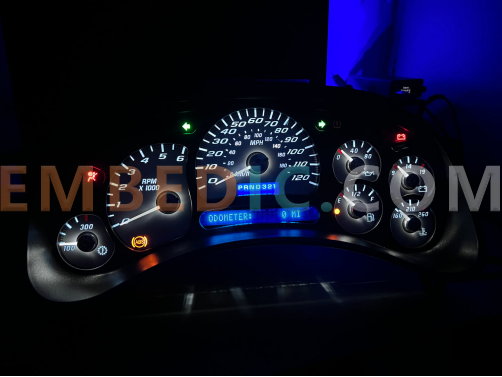
Key components typically found in an instrument cluster include:
Speedometer: Displays the current speed of the vehicle, usually receiving input from an electrical sensor rather than a mechanical connection.
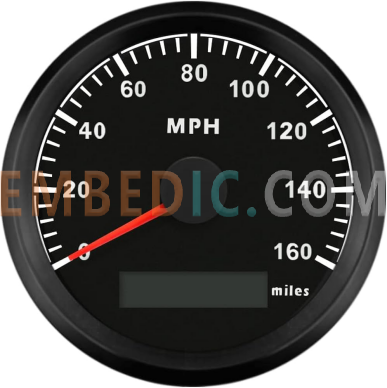
Tachometer: Indicates the engine's revolutions per minute (rpm), with electronic input from the engine control unit (ECU) replacing traditional mechanical connections.
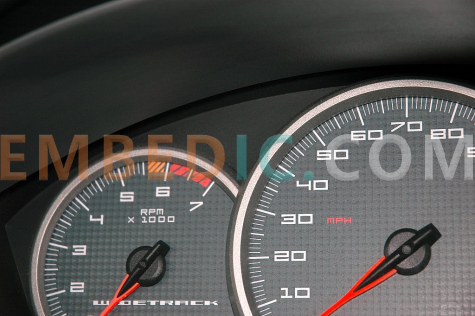
Fuel Gauge: Shows the remaining fuel level in the tank, previously connected directly to the fuel level sensor but now receiving information from the ECU.
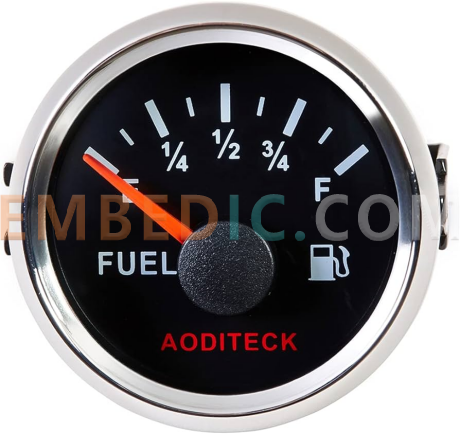
Odometer: Tracks the total distance traveled by the vehicle over its lifetime.
Turn Signal Indicators: Illuminate to indicate the activation of turn signals, aiding in safe maneuvering on the road.
In modern vehicles, the design of the instrument cluster has evolved significantly. Previously, individual gauges received input directly from the components they monitored. For instance, the fuel gauge would connect directly to the fuel level sensor. However, in contemporary cars, all sensors are linked to the ECU, which then relays pertinent information to the instrument cluster.
The instrument cluster is typically connected to the vehicle's electrical system through a wiring harness featuring a multi-pin connector. This design facilitates easy removal of the cluster when necessary. Power is typically supplied to the cluster via a dedicated fuse from the fusebox beneath the driver's side dashboard. If the instrument cluster malfunctions, checking the fuse is often the first troubleshooting step.
In recent years, some vehicles have transitioned to all-electronic instrument clusters, featuring digital readouts instead of traditional analog gauges. These digital clusters, often referred to as digital instrument panels or dashes, eliminate moving parts and offer enhanced functionality and customization options.
In essence, the instrument cluster serves as a vital interface between the driver and the vehicle's operational status, providing essential information for safe and efficient driving.
The functioning of an instrument panel cluster involves several components and processes working together to provide the driver with essential information about the vehicle's status. Here's an overview of how it works:
Sensor Inputs: Various sensors located throughout the vehicle continuously monitor different parameters such as vehicle speed, engine RPM, fuel level, coolant temperature, and more. These sensors convert physical measurements into electrical signals.
Engine Control Unit (ECU): The ECU, also known as the engine control module (ECM) or powertrain control module (PCM), serves as the vehicle's electronic brain. It collects data from the sensors and processes this information to control various aspects of the engine's operation, including fuel injection, ignition timing, and emission controls.
Data Processing: The ECU processes the sensor data and calculates values such as vehicle speed, engine RPM, fuel level, and other parameters based on predefined algorithms and calibration.
Communication: Once the ECU calculates the values, it communicates this information to the instrument panel cluster. In modern vehicles, this communication is typically done via a communication network such as Controller Area Network (CAN bus). The instrument cluster receives this data and interprets it for display.
Display: The instrument cluster presents the information to the driver through analog gauges (such as speedometer and tachometer) or digital displays. In analog clusters, stepper motors or servos move the needles of the gauges based on the received electrical signals. In digital clusters, the information is displayed electronically on an LCD or TFT screen.
Warning Lights and Indicators: In addition to displaying numeric values or analog readings, the instrument cluster also illuminates warning lights and indicators to alert the driver of any issues or malfunctions detected by the vehicle's systems. These may include indicators for low fuel, engine temperature, oil pressure, battery charge, check engine light, and more.
Power Supply: The instrument cluster is powered by the vehicle's electrical system, typically through a dedicated fuse. It may also receive power from the vehicle's battery or alternator.
Integration with Vehicle Systems: The instrument cluster may also interact with other vehicle systems, such as the entertainment system, navigation system, or driver assistance features, to display additional information or warnings as needed.
Overall, the instrument panel cluster serves as a vital interface between the driver and the vehicle's operating conditions, providing real-time feedback and ensuring safe and efficient driving.
Experiencing issues with your vehicle's instrument cluster can be concerning, but understanding the common causes can help diagnose and resolve the problem efficiently. Here are the primary reasons why your instrument cluster might not be functioning properly:
Fuse Failure:
A blown fuse is a prevalent culprit behind malfunctioning instrument clusters. Check your car's fuse box for any blown fuses labeled for the instrument panel or dashboard. Replace the blown fuse with one of similar amperage rating, ensuring not to exceed the original specification.
Loose Cable Connections:
Loose cable connections can disrupt the functionality of the instrument cluster, often resulting from jarring impacts or vibrations. Inspect all cable connections to ensure they are securely fastened. If issues persist, professional servicing may be necessary to address underlying connection problems.
Faulty Fuse Box:
A malfunctioning fuse box can impair power distribution to the instrument cluster, leading to its failure. Verify the condition of the fuse box, especially if warning lights on the dashboard are illuminated consistently. Replacement of the fuse box may be required to restore proper operation.
Poor Ground Wire Connection:
Inadequate grounding due to loose or corroded ground wire connections can cause erratic behavior in the instrument cluster. Clean and secure the ground wire connection to the car's chassis to ensure proper electrical flow. If issues persist, consider replacing the ground wire assembly.
Defective Gauge Cluster Unit:
A malfunctioning gauge cluster unit can lead to erratic gauge readings or complete failure of the instrument cluster. Replacement of the faulty unit is often the most effective solution to restore functionality. Alternatively, attempting a system reset by disconnecting the battery for several minutes may help resolve minor issues.
In modern vehicles, the Instrument Panel Cluster (IPC) serves as a crucial interface between the vehicle and the driver, providing essential information about the vehicle's status. This article delves into the comprehensive design study of an IPC, highlighting its system design, component selection, detailed block diagram, software design, and application software development.
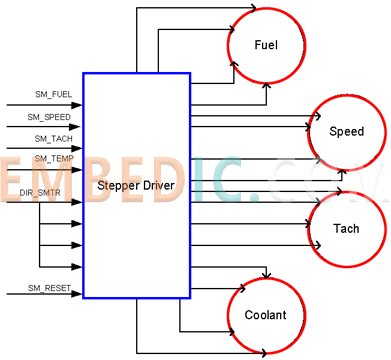
System Design:
The IPC consists of various components, including analog and digital displays, LED telltales, and a driver information center (DIC). It interfaces with multiple vehicle subsystems through in-vehicle communication protocols such as SAE J1850, CAN, and KW2000.
Component Selection:
Key components selected for the IPC include stepper motors for gauge control, LED drivers for telltale illumination, LCD displays for odometer and DIC, and a microcontroller for data processing and control. Considerations such as performance, price, compatibility, and availability guide the selection process.
Software Design:
Software plays a vital role in the IPC's functionality, requiring careful consideration of parameters such as operating system, device drivers, and communication-handling protocols. A real-time operating system (RTOS) is designed to manage tasks occurring at specific time intervals, ensuring efficient operation. The application software is structured into modules to handle various features such as odometer computation, telltales display, gauges control, DIC functions, and communication handling.
Communication Handlers:
Communication in the IPC follows a layered approach based on the OSI Seven Layer model, facilitating data flow between the microcontroller and external devices. Device-driver layer, message loader/unloader layer, message-manager layer, and application layer collectively manage data transmission and reception.
Application Software Development:
The application software is developed to implement specific features of the IPC, including odometer computation, telltales display, gauges control, DIC functions, and communication handling. Each feature is allocated to separate modules, ensuring modularity and ease of maintenance.
Through meticulous system design, component selection, software design, and application software development, the Instrument Panel Cluster (IPC) is designed to effectively communicate critical vehicle information to the driver, ensuring a seamless driving experience.
Manufacturer: Texas Instruments
IC DSP FIXED-POINT 529FCBGA
Product Categories: DSP
Lifecycle:
RoHS:
Manufacturer: Texas Instruments
IC DGTL MEDIA SOC 338NFBGA
Product Categories: SOC
Lifecycle:
RoHS:
Manufacturer: Texas Instruments
IC DGTL MEDIA PROCESSR 684FCBGA
Product Categories: DSP
Lifecycle:
RoHS:
Looking forward to your comment
Comment